In the highly competitive cosmetics market today, whitening products have always held a significant position.
Data shows that the global cosmetics market size reached $419.8 billion in 2024 and is expected to rise to $629.7 billion by 2033, demonstrating strong market vitality.
Among them, due to traditional cultural reasons, countries in the Asia-Pacific region, such as China, Japan, South Korea, and Southeast Asian nations, have extremely strong market demands for beauty and skincare products.
In the United States, Canada, and other countries, consumers have a high demand for whitening creams and spot – lightening serums aimed at sunspots and age spots.For cosmetics manufacturers, accurately grasping the development trends of whitening ingredients can lead to more opportunities in the market.
Based on this, we have conducted an in – depth analysis of the Top 17 whitening ingredients in cosmetics in 2024 to provide valuable information for cosmetics manufacturers. The following rankings are based on incomplete statistical data and are for reference only.
No.1 Phenylethyl Resorcinol
Phenylethyl Resorcinol, with the chemical formula, is usually a white to light brown powder. Currently, it is considered the most effective whitening ingredient in the field of skin research. It can inhibit the activity of tyrosinase and ultimately suppress the production of melanin.
Its whitening effect is 22 times that of kojic acid and 100 times that of α- arbutin. At the same time, its strong antioxidant activity promotes the decomposition of melanin, significantly brightening the skin tone and reducing pigmentation problems such as age spots and acne marks. In addition, it has good lipophilicity and is easily absorbed by the skin, thus playing a significant role.
Phenylethyl Resorcinol has no potential irritation or sensitivity, and allergic reactions are extremely rare at present. However, it is necessary to avoid using overly high concentrations. It is generally believed that the maximum usage limit of this ingredient in cosmetics is 0.5%.
Applications in Cosmetics
Foundations, Powder Compacts, Concealers: Adding phenylethyl resorcinol to these products can inhibit melanin production while covering imperfections.
Skin Brightening Products: The addition of phenylethyl resorcinol can make the bridge of the nose, brow bones, and cheeks more prominent, reducing dark shadows.
Phenylethyl resorcinol is slightly soluble in water but easily soluble in propylene glycol and butylene glycol. It can be first dissolved in these solvents to form an emulsion and then mixed with the color cosmetic matrix. Alternatively, it can be encapsulated in liposomes or combined with antioxidants and vitamin C before being added to cosmetics.
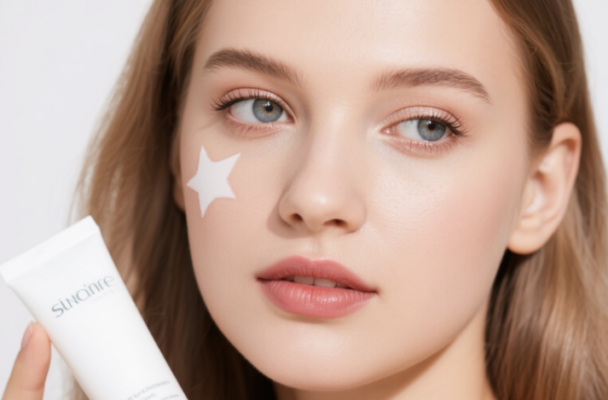
No.2 Bakuchiol
Bakuchiol is a natural phenolic compound, usually a white crystalline powder. It is mainly derived from the fruits of Psoralea corylifolia and can be isolated from Psoralea corylifolia through solvent extraction.
Studies have shown that bakuchiol has anti-inflammatory, antibacterial (against Propionibacterium acnes and Staphylococcus aureus), antioxidant, antiaging, and whitening effects. It can reduce the decomposition of skin collagen and inhibit the activity of tyrosinase, thereby reducing melanin production.
Applications in Color Cosmetics
Nourishing Foundation Makeup: Adding bakuchiol to liquid foundations and cushion compacts can endow color cosmetic products with skin-nourishing effects. Such products are suitable for mature skin and consumers who pay attention to skin care.
anti – allergic and Anti-inflammatory Color Cosmetics: Bakuchiol can be added to concealers and primers specifically designed for sensitive skin. This can cover skin problems while reducing skin discomfort.
Antioxidant Setting Products: Adding bakuchiol to loose powders and powder compacts can prevent the skin from producing excessive free radicals due to ultraviolet rays and pollution.
Lip Color Cosmetics: Since the skin on the lips is thin and prone to dryness and aging, bakuchiol can be added to lipsticks and lip glosses to nourish the lip skin.
No.3 Ginseng Essence Water
Ginseng Essence Water is rich in various active ingredients, among which ginsenosides are of great importance. It is mainly used for firming the skin, delaying aging, and brightening the skin tone.
In addition, it can enhance the skin barrier function, promote the synthesis of collagen, and reduce age spots and pigmentation. Moreover, ginseng root water also has certain anti-inflammatory and anti – allergic effects, making it very suitable for sensitive skin.

Applications in Color Cosmetics
Nourishing Foundation Makeup: Adding ginseng essence water to liquid foundations and cushion compacts can produce the effects of firming the skin and promoting collagen synthesis.
Soothing Color Cosmetics: Given the anti – inflammatory and anti – allergic properties of ginseng essence water, it is widely used in concealers and primers for sensitive skin. It can reduce the incidence of allergies, allowing people with sensitive skin to create a delicate makeup look.
Skin-brightening Color Cosmetics: Ginseng essence water can be applied to highlighters, blushes, and other color cosmetic products. It can inhibit melanin and make the makeup more radiant.
No.4 4-Butylresorcinol
This ingredient is also derived from the cones of Pinus sylvestris. It is insoluble in water but soluble in most oils and organic solvents. It can effectively In clinical studies, 4-butylresorcinol has a significant spot-removing effect.
In one study, elderly volunteers used a preparation containing 4-butylresorcinol to treat age spots, and the effect was significantly better than that of hexylresorcinol and phenylethyl resorcinol.
However, some people may experience skin stinging and redness after use. Therefore, when using products containing this ingredient, it is recommended that consumers conduct a patch test first.
Applications in Color Cosmetics
Whitening and Brightening: 4-butylresorcinol can be added to whitening liquid foundations and powder compacts to inhibit melanin production from the source.
Antioxidation: In some skinnourishing lipsticks and eyeshadows, adding 4-butylresorcinol can protect the relatively fragile lip and eye skin while applying makeup.
anti – inflammatory and Soothing: In color cosmetics specifically designed for sensitive skin, it can relieve skin discomfort, allowing sensitive skin to enjoy the makeup experience.
No.5 Crithmum Maritimum Callus Culture Filtrate
This ingredient is a filtrate of plant stem cell culture extracted from the roots of Crithmum maritimum, with a unique aroma. It is rich in beneficial components such as polyphenols, flavonoids, vitamins, and organic acids. Among them, chlorogenic acid can scavenge free radicals and inhibit tyrosinase.
In addition, these components can inhibit the peroxidation of linoleic acid. Its antioxidant activity is higher than that of α – tocopherol and BHT, and it can improve dry and rough skin conditions. Furthermore, the filtrate of Crithmum maritimum callus culture can significantly reduce the content of TNF – α inflammatory factor, which is beneficial for improving redness and sensitivity problems of sensitive skin.
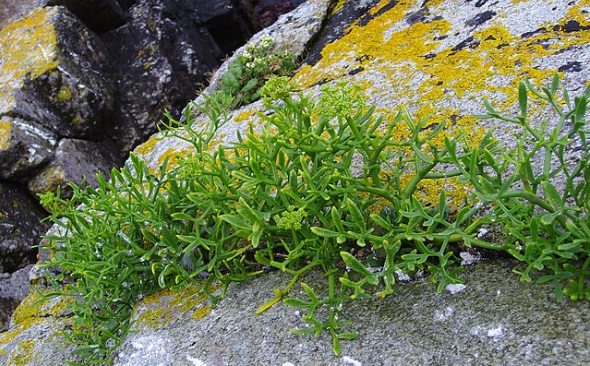
Applications in Color Cosmetics
Liquid foundations and powder compacts added with this ingredient can not only modify the skin tone but also provide antioxidant and soothing repair protection for the skin. In addition, if this ingredient is added to some makeup removers, it can nourish the skin after makeup removal and reduce skin dryness and sensitivity caused by makeup removal.
No.6 Olive Fruit Extract
Olive fruit extract appears as a dark green or yellow – green liquid or paste. Olive fruit extract can help activate the activity of macrophages, thereby phagocytosing melanin. Moreover, it has an inhibitory effect on the activity of B16 melanocytes and acnecausing bacteria.
Its main components are oleuropein, hydroxytyrosol (antioxidant), squalene (forming a protective film on the skin), and vitamin E. Among them, the antioxidant capacity of hydroxytyrosol is stronger than that of vitamin C and vitamin E. In addition, olive fruit extract can penetrate into the hair fiber, repair damaged hair, and reduce hair breakage and split – ends.
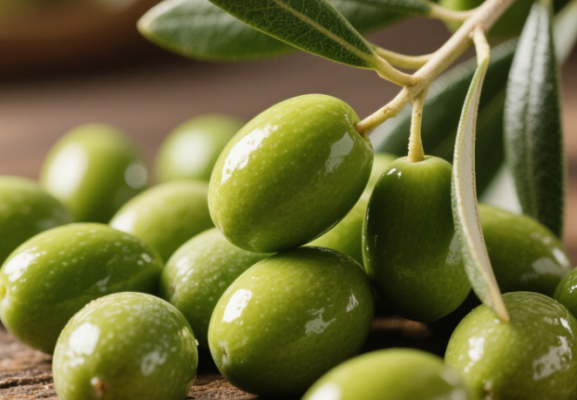
Applications in Cosmetics
Skin Care Products: Adding olive fruit extract to face creams, lotions, and serums can moisturize the skin and help reduce fine lines.
Hair Care Products: Adding this ingredient to shampoos, conditioners, and hair masks can repair damaged hair quality and make the hair smoother.
In addition, it can also be well applied in food, such as edible oils and functional foods.
No.7 Tea Extract
Tea extract appears as a light green or yellow – green liquid. It contains polyphenols, especially epigallocatechin-3-gallate (EGCG), which has strong antioxidant properties.
They can scavenge free radicals, reduce oxidative stress damage to the skin, thereby delaying the skin aging process and reducing the formation of wrinkles and age spots. Polyphenols also help to shrink pores and reduce excessive sebum secretion in oily skin.
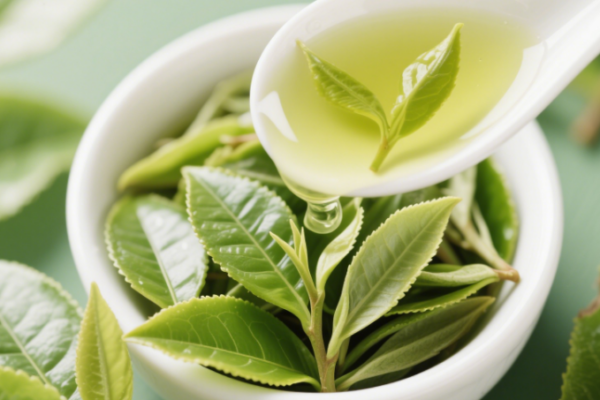
Applications in Color Cosmetics
Moisturizing Liquid Foundations: Adding tea extract to foundation makeup products can prevent the foundation from darkening due to oxidation and keep the makeup fresh.
Primers or Liquid Foundations Containing Tea Extract: They can help control sebum secretion and make the foundation last longer.
For Sensitive or Inflammatory Skin: Foundation makeup products containing tea extract can reduce skin irritation. After makeup removal, when the skin is temporarily dry, the anti – allergic and anti-inflammatory effects of tea extract can help soothe the skin.
No.8 Azelaic Acid
Azelaic acid is a colorless to light yellow crystal or crystalline powder. Its most significant effect is to exfoliate, prevent pore blockage, and achieve oil control, making it especially suitable for people with oily skin.
Moreover, it can also inhibit the production of anaerobic bacteria, aerobic bacteria, and reactive oxygen free radicals in hair follicles, and has antibacterial and anti – inflammatory effects, making it suitable for acne patients. At the same time, it can help reduce melanin production and fade acne marks, melasma, melanoma, and lentigines.
Applications in Color Cosmetics
Enhancing Product Texture: Azelaic acid can increase the softness of color cosmetic products. For example, adding this ingredient to lipsticks and lip balms can make them smoother when applied. Adding it to eyeshadows, blushes, and foundations can make the powder more delicate and the makeup more natural and longlasting.
Adding Skin Care Functions to Color Cosmetics: Its properties of gentle exfoliation, oil control, antibacterial, anti-inflammatory, and reducing melanin production can help care for the skin and reduce pore blockage problems caused by makeup.
No.9 Yeast Fermentation Products
Yeast fermentation products are rich in active ingredients such as small – molecule amino acids, polypeptides, nucleotides, and vitamins, and are excellent skin regulators. Yeast fermentation products have excellent functions such as oil balance, whitening, spot lightening, moisturizing, and repair.
Relevant research shows that these active ingredients can balance oil, whiten, lighten spots, moisturize, and repair the skin. In a test involving 200 users with oily skin, after using skin care products containing this ingredient for 4 weeks, the sebum secretion on the Tzone of many subjects decreased significantly.
For example, one of the core ingredients of Lancôme Advanced Génifique Serum is yeast fermentation product lysate. In color cosmetics, Estée Lauder Double Wear StayinPlace Makeup Foundation adds yeast fermentation products, which can keep the makeup in place for 12 hours.
No.10 Kojic Acid
Kojic acid is a colorless or white needle – like crystal, soluble in water, alcohol, and acetone.
It is produced by the fermentation of various substances by Aspergillus. Kojic acid was first used for preservation and anticorrosion in food, medicine, and agriculture.
Kojic acid can effectively block the formation of melanin. The principle is that it can compete with tyrosinase for copper ions, making tyrosinase inactive. At the same time, kojic acid also has antioxidant effects. Experiments have shown that in the antioxidant test, the free radical scavenging rate of a 0.5% kojic acid solution is greater than 50%.
Applications in Cosmetics
KOSE whitening powder compacts add kojic acid.White Beauty Serum, which uses kojic acid as the main whitening ingredient, has a good reputation for whitening and spot removal. In color cosmetics, some Jap
No.11 Ectoin (Tetrahydro – methylpyrimidine Carboxylic Acid)
Ectoin was first discovered by Galinski in 1985. It can protect the skin, soothe inflammation, and resist ultraviolet rays in extreme conditions.
Relevant experimental data show that in the ultraviolet irradiation experiment, after using skin care products containing 5% Ectoin, the survival rate of skin cells increased.
Clinical tests on its anti-inflammatory and soothing effects show that after long-term use of products containing Ectoin by sensitive skin subjects, a high proportion of subjects’ skin inflammation symptoms improved.
Applications in Cosmetics
For example, many products of the German skincare brand Dr. Barbara Sturm add Ectoin. Its star product, the AntiPollution Serum, contains Ectoin, which can help the skin reduce the damage caused by external pollution and ultraviolet rays.
Estée Lauder Double Wear StayinPlace Makeup Foundation also adds Ectoin, which can make the foundation more longlasting.
No.12 3 – O – Ethyl Ascorbic Acid
3 – O – Ethyl Ascorbic Acid is a derivative of vitamin C. It has the same whitening and spot-removing effects as vitamin C. Research data shows that in an 8 week human experiment, after using a whitening product containing 2% 3 – O – Ethyl Ascorbic Acid, the skin tone of the subjects became brighter.
However, unlike ordinary vitamin C, it has better physical properties and stability, making it easier to formulate in cosmetics.
Applications in Cosmetics
The Dr.Ci:Labo Pharma VC100 Essence uses 3 – O – Ethyl Ascorbic Acid as the main ingredient and has the effects of whitening, lightening spots, and combating pigmentation. In color cosmetics, some Japanese whitening cushion compacts add 3 – O – Ethyl Ascorbic Acid to enhance the whitening effect.
No.13 Tranexamic Acid
Tranexamic acid was first used as a hemostatic drug in clinical practice and later was widely applied in the cosmetics field. Also known as transamic acid and aminomethylbenzoic acid, it can directly penetrate the stratum corneum, inhibit the activity of melanocytes, and prevent the aggregation of melanin.
Tranexamic acid also has antioxidant effects, which can slow down skin aging. Clinical data shows that in an experiment involving 200 patients with melasma, after longterm use of skin care products containing 3% tranexamic acid, a high proportion of patients’ melasma became lighter.
For example, Shiseido HAKU Whitening Essence uses tranexamic acid as the main ingredient. It helps users to lighten spots and whiten the skin, and has gained an excellent reputation in the market.
No.14 Ganoderma Lucidum Extract
Ganoderma lucidum extract is rich in various components, including amino acids, polypeptides, fungal lysozyme, carbohydrates, ergosterol, triterpenoids, coumarin glycosides, and volatile oils. These components work synergistically and are beneficial to the skin, endowing it with powerful skin – care effects.
Studies have shown that triterpenoids in Ganoderma lucidum extract can inhibit the activity of tyrosinase, thereby reducing melanin production. In an 8 – week experiment with 200 subjects who had dull skin, after using skin care products containing 5% Ganoderma lucidum extract, many subjects experienced a significant improvement in skin brightness.
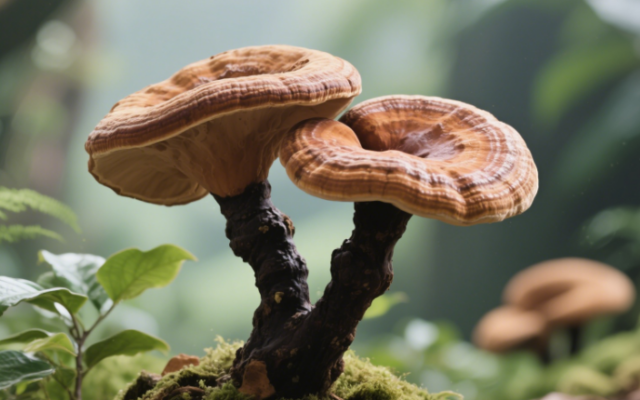
The polysaccharide components in Ganoderma lucidum extract have excellent moisturizing properties, helping the skin retain moisture. Additionally, the fungal lysozyme in Ganoderma lucidum extract has auxiliary anti – inflammatory, antioxidant, and anti – aging effects on the skin.
For instance, A series of Herborist adds Ganoderma lucidum extract, which can not only brighten the skin tone but also delay skin aging. In the field of color cosmetics, a certain skin – caring liquid foundation of Perfect Diary also incorporates this ingredient, providing moisture and anti – inflammatory effects during makeup application.
No.15 Glutathione
Glutathione is a tripeptide composed of glutamic acid, cysteine, and glycine, with GSH being the main active form.
Glutathione has an extremely high free – radical scavenging ability. Experimental data shows that in an in – vitro free – radical scavenging experiment, at a concentration of 0.5mg/mL, the scavenging rate of Glutathione for DPPH free radicals is relatively high. This property helps delay the skin aging process. Moreover, Glutathione can inhibit the formation of melanin and promote melanin metabolism.
The Glutathione Serum of The Ordinary contains this ingredient, mainly aiming at antioxidant and whitening effects. In the field of color cosmetics, a certain whitening cushion of Lancôme also includes Glutathione.
No.16 HPR (Hydroxypinacolone Retinoate)
HPR is formed by the dehydration condensation of retinoic acid and pinacol.
Research from the American Academy of Dermatology (AAD) indicates that, compared with traditional retinol, the transdermal absorption rate of HPR is significantly increased, while its irritancy is much reduced. Its phototoxicity and photosensitivity are significantly lower than those of similar retinoid components, making it suitable for use in cosmetic formulations.
In terms of skin – care effects, HPR can regulate the metabolism of the stratum corneum and promote the generation of new cells. An experiment conducted by an international dermatological research institution, which lasted for 12 weeks and involved 300 subjects, showed that after using skin care products containing 0.1% HPR, a high proportion of subjects experienced a reduction in skin wrinkle depth and an improvement in enlarged pore problems.
Meanwhile, HPR can effectively reduce sebum gland secretion, which helps alleviate facial acne symptoms. Additionally, HPR can reduce melanin production, fade age spots, and has a remarkable whitening effect.
Many anti – aging products of the French skin – care brand Decleor contain HPR, enabling the achievement of skin anti – aging, oil control, and whitening. In the field of color cosmetics, some liquid foundations and primers have started to add HPR to help prevent skin aging.
No.17 Carnosine Decarboxylate Hydrochloride
Carnosine decarboxylate hydrochloride has powerful antioxidant and anti – glycation capabilities. According to research published in the International Journal of Cosmetic Science, carnosine decarboxylate hydrochloride solution has a high scavenging rate for DPPH free radicals.
In terms of anti – glycation, after long – term use of skin – care products containing carnosine decarboxylate hydrochloride, the content of advanced glycation end products (AGEs) in the skin decreases, making the skin firmer. Moreover, carnosine decarboxylate hydrochloride can accelerate pigment metabolism and lighten the skin tone.
The anti – glycation essence of Dr.Ci:Labo takes carnosine decarboxylate hydrochloride as the core ingredient. Combined with other anti – glycation and antioxidant components, it helps consumers to slow down the aging process. In color cosmetics, some anti – aging and brightening cushions and powder compacts can also consider adding this ingredient to achieve multiple effects of anti – oxidation and beautification.
Leecosmetic: Using raw materials from internationally renowned companies
Leecosmetic is a leading cosmetics manufacturer. It provides high – quality cosmetics products at very competitive prices and with low minimum order quantities.
We offer a range of services, such as private label cosmetics manufacturing, OEM/ODM manufacturing, and provide a complete product supply solution for small and medium – sized cosmetics brands.
As a fast – growing private label cosmetics manufacturer, Leecosmetic has been using raw materials from internationally renowned companies in a safe and efficient manner.
Contact: https://leecosmetic.com/contactus/

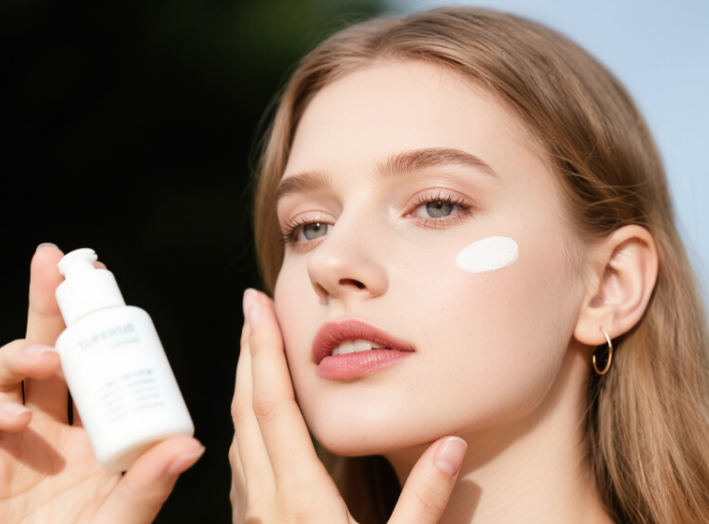
Świetny artykuł. W czasie poszukiwania w internecie pożądanych informacji trafiłam na ten artykuł. Wielu autorom wydaje się, że posiadają odpowiednią wiedzę na poruszany przez siebie temat, ale tak nie jest. Stąd też moje miłe zaskoczenie. Muszę wyrazić uznanie za Twój trud. Będę polecał to miejsce i często odwiedzał, aby poczytać nowe posty.
Pingback: 50 Popular Edible Cosmetic Ingredients and Their Applications - leecosmetic